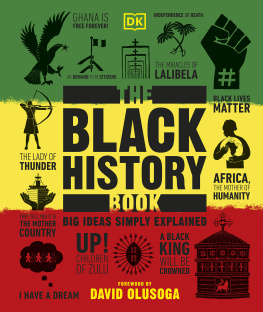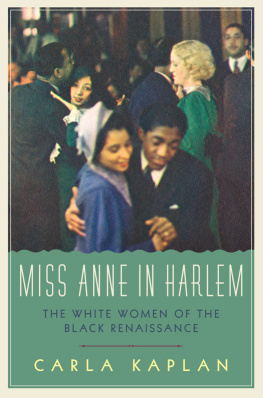Contents
Page List
Guide
BLACK MANHATTAN
JAMES WELDON JOHNSON
BLACK MANHATTAN
with a foreword by Zadie Smith
NEW YORK, NY
Copyright 1930 by James Weldon Johnson. Copyright renewed 1958 by Mrs. James Weldon Johnson.
Foreword copyright 2021 by Zadie Smith.
All rights reserved
Printed in the United States of America.
10 9 8 7 6 5 4 3 2 1
No part of this book may be used or reproduced in any manner without written permission of the publisher. Please direct inquiries to:
Ig Publishing
Box 2547
New York, NY 10163
www.igpub.com
ISBN 978-163246-11-55
TO
JOHN B. NAIL
Who himself has witnessed the past threescore years and more of the changes herein recorded and has been the friend of many of the outstanding characters that appear in these pages.
CONTENTS
by Zadie Smith
The black city within the whiteHarlem, the metropolis of the Negro worldThe anomaly of itThe beginning of the story of the Negro in New YorkThe Negro, five per cent of the population in 1626Slavery under the DutchThe beginning of the colony of black freemenGrowth of slavery under the EnglishThe slave insurrection of 1712The revolt of 1742Number of slaves and freemen in New York at close of Revolutionary War.
Changes in sentiment wrought by spirit of the RevolutionForming of the Manumission Society, John Jay, president; Alexander Hamilton, secretarySteps towards abolition of slaveryEfforts made by Negroes in New YorkMethods employedNumber of Negroes in New York at close of Civil War.
Beginnings of educationAfrican Free School established in 1787; first free school in New YorkReport on African Free School by committee from Common Council of the cityGrowth of educated leadershipOrganization of churchesAfrican Methodist Episcopal Zion Church organized, 1796Negro Dutch Reformed Church, 1826Widening of gap between white and black ChristianityClosing of gap between white and black educationNegro pupils and teachers in New York public school system.
Period between abolishment of slavery in the state (1827) and in the nation (1863)Negro suffrage in New YorkPrecarious situation of the freemenFounding of FREEDOMS JOURNAL, first Negro newspaper, in 1827Growth of Negro press and part played by it in New YorkBlack anti-slavery agitators: Frederick Douglass, Samuel Ringgold Ward, Henry Highland Garnett, Alexander Crummell, James W. C. Pennington, Sojourner Truth, Harriet TubmanSlave insurrections in the South; their effect on the Negro freemen in the NorthThe Negro freemen, a problem and a menace.
Rise of the idea of Negro colonizationPaul Cuffee, the first colonizerThe failure of colonization schemesAttitude of Douglass and other leaders towards colonizationNew economic pressure on Negroes in New YorkEffect of rising tide of immigration on Negroes in New York.
Outbreak of the Civil WarPro-slavery sentiment in New York CityThe fight for the chance to fightNew York Negro regiments in the warThe Draft Riots in New York CityThe close of the war, and the lull that followedShift of race interests and activities to the SouthFrederick Douglass, great New Yorker.
Where the Negro lived in the earliest days of New York CityThe steady shift northwardSectional pride of the Greenwich Village colonyThe shift to the upper Twenties and lower Thirties, west of Sixth AvenueBrooklyn becomes centre of social life and respectabilityChange in racial activities of the Negro in New YorkEra of activities in the professional sportsThe jockeys, the baseball players, the prize-fightersMolineaux, the first American championHis fight with Cribb in England for the championship of the worldBill Richmond, New York Negro, a factor in the English prize-ringWorld championsNew York, social and business centre of the Negro professionals in sportsGrowth of New Yorks black Bohemia.
New Yorks black Bohemia and its clubsWhere Negro theatrical and artistic effort was nourishedA cut-back to the earliest beginnings on the stageThe African Company in classic plays, 1821Ira Aldridge, tragedianHis success in England and on the ContinentIra Aldridge Memorial Chair for Shakespeare Memorial Theatre at Stratford-on-AvonActual professional start of Negro in American theatre made on minstrel stageWhite Negro minstrels and black Negro minstrelsSam LucasCharles Frohman started as a minstrel managerThe Frohmans, Sam Lucas, and his diamondsNegro minstrelsy, the foundation of the middle period of Negro theatrical development.
The middle theatrical periodThe Creole Show SOUTH BEFORE THE WARTHE OCTOROONSORIENTAL AMERICAWorths MuseumBob Cole, a versatile geniusSome concert singersSissieretta Jones, the Black PattiBlack Pattis TroubadoursA TRIP TO COONTOWN, CLORINDY, THE ORIGIN OF THE CAKE-WALKErnest Hogan.
Williams and Walker come from out of the WestThey make the cake-walk famousThey issue challenge for a cake-walk contest to William K. VanderbiltThey play before King EdwardBert Williams joins Ziegfeld folliesCole and Johnson THE SHOOFLY REGIMENT and THE RED MOON.
Negro as maker of nations songsListen to the Mocking BirdCarve dat PossumJames Bland, Carry Me Back to Old Virginny Oh, dem Golden Slippers, In the Morning by the Bright-light, In the Evening by the Moonlight,Gussie L. Davis, Ernest Hogan, Cole and Johnson, and other makers of songsHarry T. Burleigh, J. Rosamond Johnson, and Will Marion CookThe West Fifty-third Street centreThe Marshall HotelBirth of the jazz orchestraJim Europe and the Clef ClubW. C. Handy and the blues.
The race riot of 1900New York Negroes organize for actionThe Citizens Protective League, the Afro-American CouncilThe national situation of the NegroBooker T. WashingtonW. E. Burghardt Du BoisThe Niagara MovementThe National Association for the Advancement of Colored PeopleThe National Urban League.
The trek northwardThe conquest of HarlemThe invasionThe oppositionThe outbreak of the World WarBlack labour at a premiumThe exodus northJobs and money plentifulThe purchase of HarlemTaken over without violenceThe migrants to New York, Southern and West IndianThey quickly become New YorkersNew Yorks tolerant attitudeWill the Negroes hold Harlem?
The fame of HarlemNight life in the Negro metropolisOther modes of enjoyment, strolling, going to church, paradesThe churches and their place in Negro lifeThe sets in Harlem, respectable, social, fast, and underworld.
Growth of a Negro theatre in HarlemThe Lafayette and the Lincoln playersThe DARKTOWN FOLLIESBeginning of the third theatrical periodThe Colored Players open at the Garden Theatre, April 5, 1917The Harlem night-clubs, nurseries for talentThe Krigwa Players.
Charles Gilpin in Drinkwaters ABRAHAM LINCOLNCharles Gilpin in ONeils EMPEROR JONESThe Drama League dinner, and the commotion it causedOther playwrights who experimented with the Negro as dramatic materialPropaganda playsThen came along SHUFFLE ALONGMiller and Lyles, and Sissle and BlakeSome more seriousplaysPaul Robeson in ONeills ALL GODS CHILLUN GOT WINGSRiots in the airFlorence Mills, the child artist, the incomparable comedienneHer death.
A Negro playwright and his playMore playsJules Bledsoe in Greens IN ABRAHAMS BOSOMStill more plays and musical comediesThe Theatre Guild produces PORGYBLACKBIRDS OF 1928, with Bill Robinson and his dancing feetStill more plays and comediesTwo other Negro playwrights attempt Broadway; one succeeds












